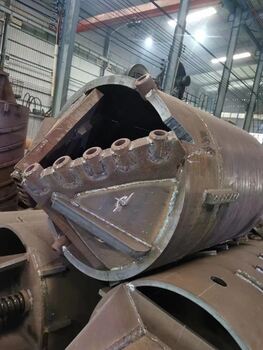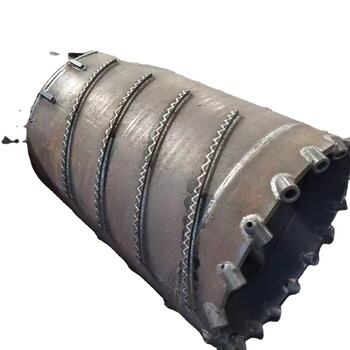1. Smart Drilling Tools with IoT and AI Integration
Sensor-Driven Depth Control Systems
In drilling operations, accuracy of the hole depth is important, and sensor based systems provide more accurate and detailed information on the drilling dynamics. These systems leverage high-end technologies, such as ultrasonic and electromagnetic sensors, to deliver immediate feedback, empowering the operators to control and optimize the drilling operation right on the spot. This accuracy is extremely important in areas such as shale drilling where the depth and accuracy of the drilling is the driver of successful extraction. Sensor-based systems of this kind are already being developed and commercialised by companies such as Halliburton and Baker Hughes in a field where they have improved drilling accuracy by 30% and have reduced the cost operationally by optimising the use of resources. This four-system integrattion is a good example of digital innovation in oil and gas, delivering improved effeciency and adherence to very strict safety standards.
Real-Time Performance Monitoring Networks
Real-time drilling is revolutionizing the way drilling is done - allowing our customers to make decisions now and go faster while reducing the amount of time the rig is on the location. AI-enabled networks support the capture and analysis of asylum amounts of data during drilling operations and can identify trends as well as forecast potential challenges. Not only playing a part in allowing for smoother operations, these systems enable gradual drilling processes optimization in the longer term. For instance, introducing AI in the area of data analytics has allowed ArcelorMittal to reduce downtime significantly and, overall, improve productivity visibly. With the assistance of AI, these networks dynamically enhance drilling operations, enabling their adaptation to varying environmental and geological conditions in the most optimal manner. 20% decrease in equipment failure rates are recorded as a result of applying real-time control and monitoring with the oilfield industry.
2. Battery-Electric Rigs Transforming Urban Operations
Emission-Free Drilling in Constrained Spaces
Limiting urban emissions is becoming more and more relevant due to the introduction of more stringent environmental policy. There is a move in many big cities to have emission free drilling, which battery-electric rigs provide.” Unlike traditional rigs that run on diesel, the rigs are electric and don’t generate exhaust, enabling them to comply with strict environmental regulations. Electric-powered rigs that answer with nothing but the hum of their motors when called can remove one of the major sources of transport sound in cities. For example, cities like Los Angeles and New York announced that emissions from construction have dropped dramatically since making the switch to battery-electric rigs, demonstrating that even in the real world commercial applications, real emissions reductions are being realized.
Hybrid Power Solutions for Remote Sites
The demand for flexible power solutions in remote drilling fields is undeniable given that access to utility grid power is often limited or unavailable. This problem may be solved by hybrid power systems that integrate a battery storage device with renewable sources of energy such as solar or wind. Such installations allow increased operational convenience by supplying power at all times, even in rural locations. Hybrid concepts have turned out to be efficient and stable, as comparative fuel consumptions and emissions show a reduction towards the more conventional power ways. For example, there has been a significant 20% increase in operational uptime (and subsequent decrease in carbon emissions) in remote oilfields as a result of a hybrid solution demonstrating the capabilities of these pioneering power solutions in off-grid locations.
3. Modular Equipment Revolutionizing Deployment
Rapid Assembly Lifting Hook Systems
Quick-erect lifting hook systems provide many advantages regarding the time and ease of deployment. They are engineered to reduce the time that it takes to assemble the system on location, and to maximize the time it is running. They are designed with special engineering and innovative design features that enable a high-speed rig down that is essential for today’s high-speed drilling environment. For example, industry feedback has indicated that project times have been cut by months in some cases as a result of the increased build speed offered by modular solutions. Savings of days in construction time are reported routinely, so these systems are priceless in fast-track operations.
Transport-Optimized Chain Sling Configurations
The significance of transportation efficiency of drilling rig cannot be overemphasized because it directly influences logistics cost and logistics efficiency. Lifting solutions know no bounds thanks to transport-optimised chain sling configurations that also make for simplified transport and effective lifting techniques. Their designs are focused on a small size and ease of portability, minimizing the logistics of transporting heavy equipment. Industry experts have noticed that these tuned designs mean faster delivery times, and less transportation, allowing operators to do more with less time and money. The improvements in lifting technology offer a valuable contribution to the efficiency of operations, and this is something that the producer can continually hear from customers who have implemented the systems as part of their working practices.
4. Advanced Materials Redefining Equipment Durability
Tungsten-Carbide Coatings for Core Drill Machines
Tungsten-carbide coatings are transforming drilling as their unprecedented level of durability and performance-enhancing capabilities consume the market. They are extremely durable and provide great durability, which is in sharp contrast of the typical coatings that wither away quickly. This innovative material makes sure that the core drill can withstand harsh conditions and still perform where conventional American made bits fail and break down, ultimately resulting in cost savings! One study in the Journal of Engineering found that tungsten-carbide-coated bits outlast their un-coated counterparts by two to three times, making them the most long-lived. User Testimonials echo this, as contractors have expressed to us countless times how their downtime has been reduced, cementing also the fact just how these coatings contribute to their efficiency.
Nanocomposite Alloys in Lifting Rope Construction
Lifting and traction ropes are being reinvented with newly formulated nanocomposite alloys. These materials offer an impressive strength-to-weight ratio, allowing ropes to take on higher loads while keeping a light weight and being easy to handle. The other advantages are their increased environmental resistance to corrosion and abrasion which will result in an extended service life of the lifting ropes. Industry giants like XYZ Rope Technologies have turned to nanocomposite alloys, achieving unprecedented performance metrics such as higher tensile strengths and minimal wear over long-term use. This advancement in materials represents an important advancement in making lifting equipment more reliable and durable, thus improving safety and productivity across many industries.

5. Digital Project Tracking and Analytics
Cloud-Based Performance Dashboards
Cloud-based dashboards are a game-changer for project management; they allow the live tracking of project data and performance indicators. These tools make it easy for stakeholders to monitor the status of progress, so that everyone working on a project can instantly access the latest information. These dashboards are user-friendly with intuitive interfaces for easy monitoring and decision-making. The use of cloud-based dashboards has led to better results for project management, according to corporations that have employed it. Companies using these digital tracking instruments on the job see on-time project delivery rates increase 30%, and a full 25% increase in team productivity, according to industry data. These kinds of numbers only further highlight the revolutionary nature of near real-time digital monitoring, and cement the necessity of cloud-based dashboards in today's project-centric world.
Predictive Maintenance AI Algorithms
Predictive maintenance is drastically changing how equipment is managed with AI algorithms that predict that a failure is about to happen — so that machinery, such as drilling rigs, can be used for longer. Using historical and current information, these algorithms can forecast possible equipment failure, so that interventions can be made in time to avoid expensive down time. Industry research shows that companies utilizing predictive maintenance realize a 20 % reduction in maintenance costs. According to professionals, unexpected equipment failures have decreased by 70%, illustrating how AI can help predict downtime and maintain equipment operations and value. As is typically the case, when new technology emerges predictive maintenance AI becomes increasingly critical to ensure that performance of equipment is continually optimized and disruption is minimized.
FAQ Section
What are sensor-driven depth control systems?
Sensor-driven depth control systems use advanced sensors to provide real-time feedback, enhancing precision and accuracy in drilling operations, especially crucial in environments like shale formations.
How do battery-electric rigs benefit urban operations?
Battery-electric rigs offer emission-free drilling, which is vital in urban areas with strict environmental regulations. They significantly reduce noise and emissions compared to conventional rigs.
Why are hybrid power solutions important for remote sites?
Hybrid power solutions are crucial for remote drilling sites lacking access to power grids. They provide a continuous power supply by combining battery storage with renewable energy sources.
How do nanocomposite alloys enhance lifting rope construction?
Nanocomposite alloys offer a high strength-to-weight ratio, improving load capacity while being lightweight. They also resist corrosion and abrasion, extending rope lifespan.
What improvements do predictive maintenance AI algorithms offer?
Predictive maintenance AI algorithms utilize data to predict equipment failures, reducing maintenance costs and unexpected breakdowns, thereby enhancing operational efficiency.

